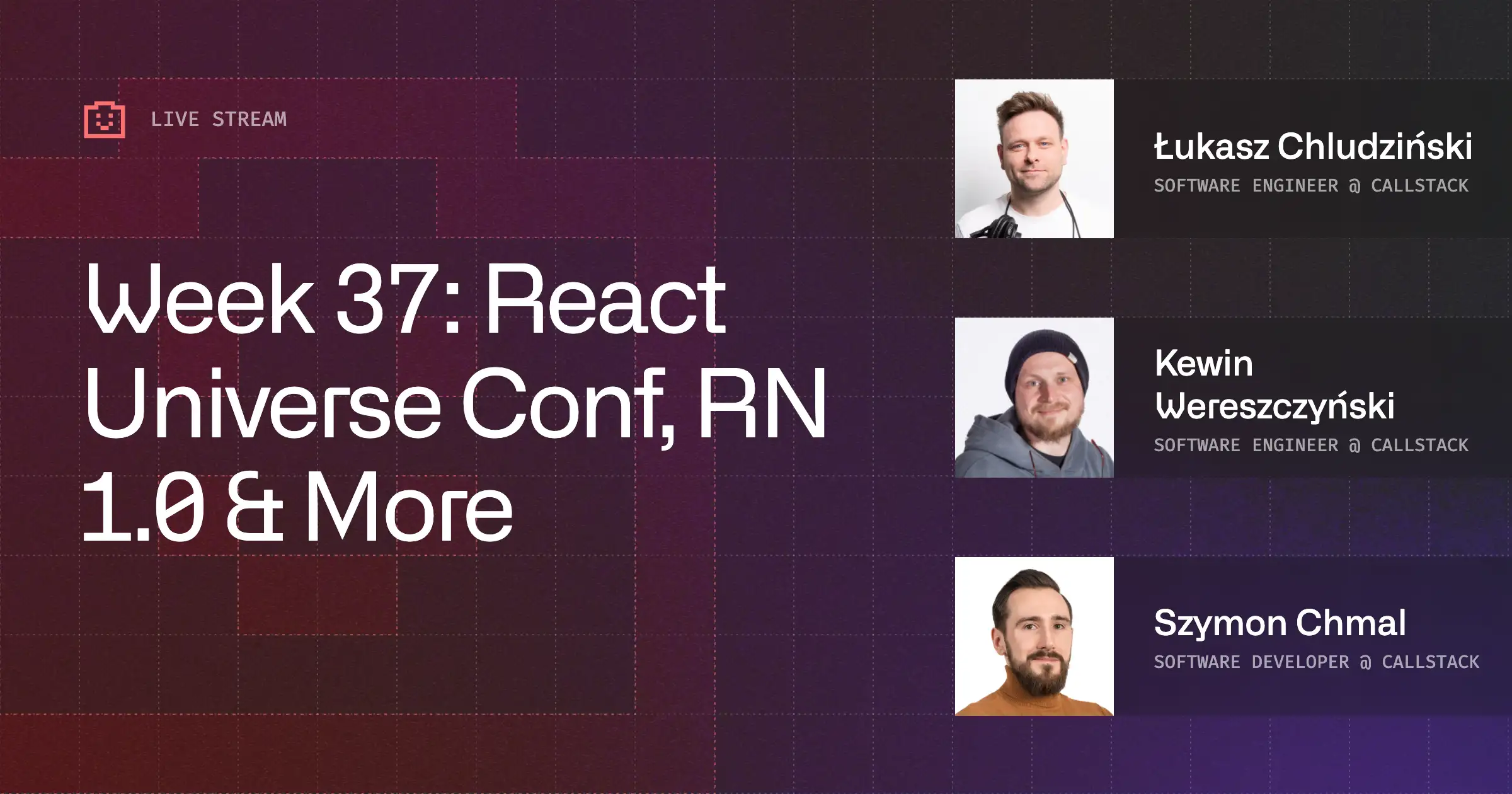Every September, just before React Universe Conf, React Native’s most active contributors gather behind closed doors. The Core Contributor Summit is where engineers from community projects, agencies, and big players like Meta and Microsoft trade perspectives, share pain points, and plant seeds for the future of the framework.
In this episode of React Universe On Air, recorded live at React Universe Conf 2025, Łukasz Chludziński sits down with Joel Arvidsson, Jay Meistrich, and Thibault Malbranche. Together, they unpack how React Native is evolving, where the gaps still lie, and what “React Native 1.0” should really mean.
Guest & episode summary
All three guests have shaped React Native through popular libraries, from Vector Icons and WebView, to Legend State, to performance profiling tools. Their work is deeply rooted in real-world client needs, giving them a different lens than internal teams at Meta or Microsoft.
The conversation ranges from the quirks of React Native on desktop, to why Meta’s use of Flow types can block progress for the community, to how open source consultancies like Callstack balance contribution with business goals.
React Native for desktop
Jay Legend shares his impromptu session on React Native for macOS and Windows. Despite Microsoft’s investment, adoption lags because of a chicken-and-egg problem: libraries aren’t built because no one uses it, and no one uses it because libraries aren’t built. The group debates what it would take for a company like Discord to tip the balance.
Tooling gaps and community fixes
From Flipper’s decline to debugging headaches, the panel highlights where Meta’s roadmap hasn’t met community needs, and how projects like Rozenite or Expo’s network inspector fill the gaps in the meantime. The discussion underscores how critical it is for Meta to share long-term plans, so the community can build safely on top.
React Native 1.0: milestone or marketing?
The number “1.0” means little to Meta or Microsoft, but a lot to decision-makers choosing frameworks. The guests debate whether React Native 1.0 should simply be a signal of stability, or whether it should mark a major architectural shift, and what “done” really means in an ever-evolving ecosystem.
How to get involved
The episode closes with advice for engineers eager to join this inner circle: maintain libraries, contribute to RFCs, and engage with issues. Sometimes, simply being the person who knows the community’s pain points inside-out can make you invaluable.
What you’ll learn
- How the cooperation between consultancies, big organizations like Meta or Microsoft, and OSS contributors looks like
- Why 2025 is being called the “year of stability” for React Native
- What makes React Native for desktop both powerful and underused
- Why Flipper failed and how new dev tools are emerging
- The meaning (and limits) of a React Native 1.0 release
- How agencies like Callstack and Software Mansion balance open source with client needs
- Practical advice for contributing and earning a spot at the Summit
Resources
Learn more about Community
Here's everything we published recently on this topic.

.jpeg)
.jpeg)














